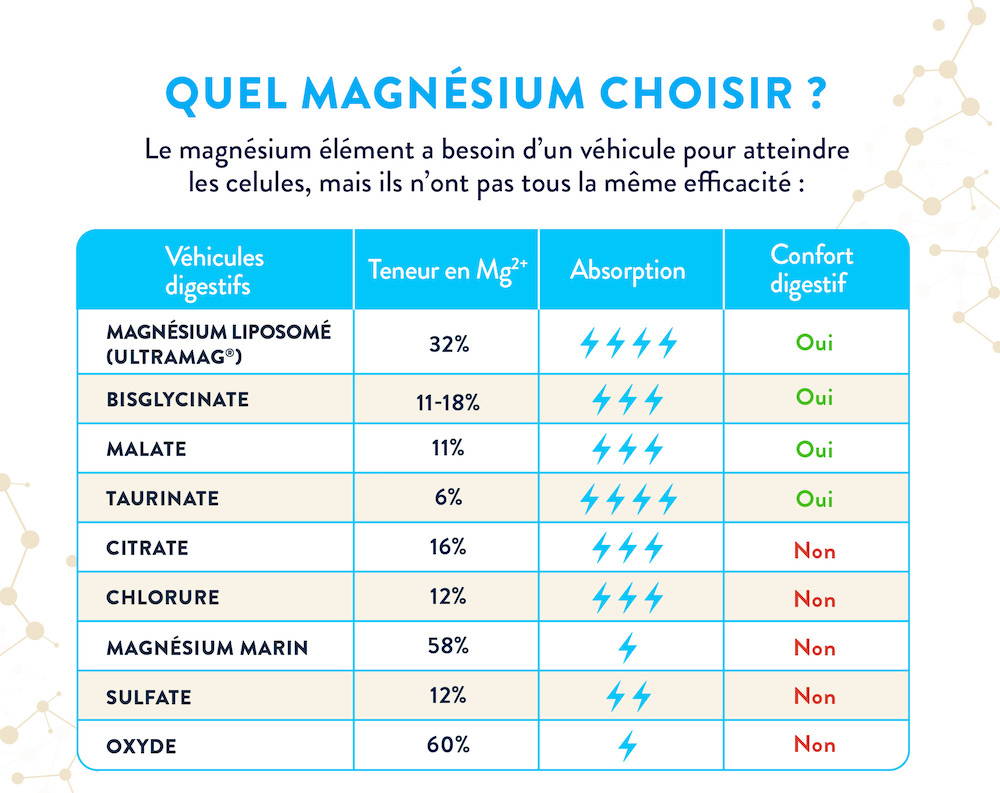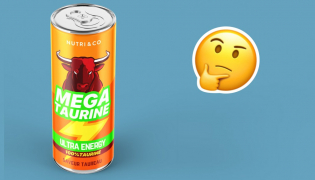
Chloride, citrate, oxide, etc., there is an abundant supply of magnesium food supplements. But between shimmering marketing and barbaric scientific terms, which one to choose? Nutri&Co helps you to find the right formulas in five steps. Follow the guide !
1. Absorption above all
Assimilation is the key to good magnesium. Quésaco? To pass the intestinal barrier, our mineral needs a transporter, but if there are many of them and they do not all have the same value. To help us, scientists have classified them into two families :
- Les sels dits inorganiques comme l'oxyde, l'hydroxyde ou encore le carbonate. Bien que naturel (quoi que pas toujours), ils ne sont pas reconnus comme nutriment par l'organisme, d'où leur qualificatif "d'inorganique". À première vue leur haute teneur en magnésium a de quoi séduire (jusqu'à 60% pour l'oxyde) ! Mais leur faible absorption laisse songeur... Si on ajoute à cela les problèmes de digestion que certains peuvent entraîner, on vous conseillera de passer votre chemin.
- Vient ensuite les sels organiques. Malate, bisglycinate, citrate, taurinate, etc. Ses véhicules présentent tous une bonne assimilation mais leur teneur est réduite, ce qui peut troubler les repaires d'un néophyte (12% en moyenne). Pourtant, à l'arbitrage, ces sels l'emportent haut la main sur les inorganiques.
Good to know: there has recently been a third family combining high content and high absorption. It's more accurate to say here.

2. What accompanying substances ?
Non, la vitamine B6 n’augmente pas l’absorption du magnésium ! Elle intervient toutefois avec ses sœurs du groupe B dans plusieurs réactions impliquant le minéral. Il est donc préférable de vous orienter vers un complexe de vitamines B. La taurine est également intéressante puisqu’elle augmente la rétention du magnésium. Le taurinate de magnésium est également une solution puisqu'une fois dissociée du minéral, la taurine rendra ce rôle clé.
3. Beware of laxative formulas
Too often, magnesium formulas neglect this crucial point. Avoid citrate, which despite good absorption, is prescribed in the case of acute constipation! Nor do we go back over inorganic salts...
4. Beware of misleading labels
Some labels guarantee 300 mg of magnesium per capsule or tablet, or even more! However, these rates are impossible for the second and third generation of carriers. A good product requires two to three tablets to reach 300 mg*, or three to four capsules.
5. The right format at the right price
Magnesium is usually taken as a three-month course of treatment to replenish its stock. The 3rd generation products are generally presented in the form of pill boxes of 90 to 180 tablets or capsules. These one- to two-month formats are traded between 15 and 22 euros.
* These 300 mg are the Nutritional Reference Values for magnesium










